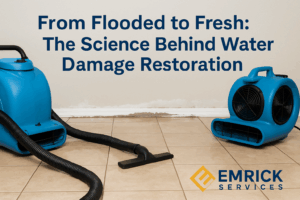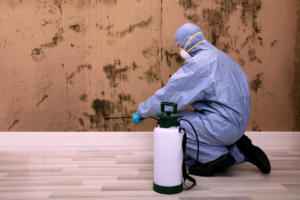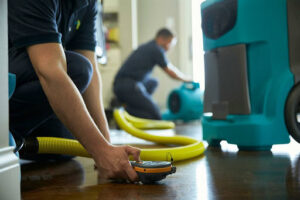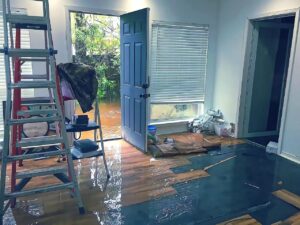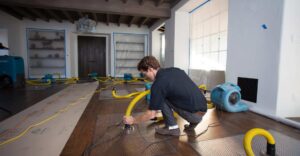The increasing flood risk in the U.S. doesn’t get much attention from the media or the public. However, this real and potentially severe problem will confront many Americans in the coming years. For a very long time, disastrous floods have primarily occurred in the same regions of the country most of the time. We have grown so accustomed to periodic or seasonal flooding in specific locations that many Americans are building homes in areas that will soon become high-risk for floods.
A new study by Nature.com reveals that flood risk in the U.S. will grow by over 25 percent over the next 30 years. But urban developers seem to disregard this fact. Consequently, you may live in flood-prone areas and not be aware of it—until it’s too late. This article will help you determine whether your home is at risk and what you can do to prepare for a flood.
What’s Causing the Increased Flood Risk in the U.S.?
The main driver behind increasing flood risk is likely climate change. Precipitation increases significantly as the earth’s temperature rises. As a result, the increase in rainfall elevates inland flooding risks. The warmer climate also melts land ice and snow in cold regions, resulting in higher sea levels, expanding ocean waters, and powerful storm surges.
Our growing population also contributes to the heightened flood risk. In growing cities, waterways are often narrowed or boxed in with concrete and stone to make way for homes and other construction. This narrows the space that water has to move. As water levels rise, this water no longer flows naturally away, and instead quickly overcomes the new, manmade channels.
How Floods Affect Our Country and Our Lives
Like forest fires, flooding serves a beneficial function in nature. Flooding helps to replenish wetlands, changes the configuration of riverbeds, fosters breeding seasons, and triggers animal migrations. However, when human migration intercepts one of nature’s most powerful forces, it can lead to devastating and costly consequences.
Experts predict that this year, flooding will cost businesses in the U.S. a whopping $49 billion. Residential homeowners will lose around $20 billion to the cost of repairs, water removal, and lost belongings.
Floods are the most common natural disaster in the U.S., and they have a forceful impact on both the economy and peoples’ lives. The damage caused by flooding can vary depending on speed, location, duration, type, and depth. Some areas have a higher potential for more significant loss than other areas due to population density, property values, and vulnerability.
Where Is the Flood Risk Highest?
You may live in a flood zone if your home is near the ocean or a lake, river, stream, or pond. Also, you may be at risk from flooding if you live in an area with enormous amounts of annual rainfall. Regardless, you can find out whether your home is at risk by visiting the FEMA Flood Map Service Center.
Some states that frequently experience widespread, devastating flooding include Florida, Georgia, Louisiana, North Carolina, South Carolina, and California.
How to Mitigate Your Flood Risk as a Homeowner
If you are in the market for a new home, you should factor in the risks of buying property in a flood-prone area. The FEMA flood maps are a great resource to help you identify properties and evaluate their flood risks before you buy.
If you already own a home in a flood-prone area, it’s too late to avoid the issue, and you can’t prevent a flood. But there are a few things that you can do to help reduce the damage to your home and belongings.
Make Your Home Flood Resistant
During the next big rainstorm, inspect your home’s exterior and your yard, and spot the areas where water tends to pool or flow toward your house. Adding retaining walls or drainage can help to route the water away from your home to avoid basement flooding.
Other steps you can take to prevent or reduce water damage to your home include:
Find a Professional, Established Flood Restoration Service
Despite any preventative measures you take, there is no surefire way to protect your home from a catastrophic flood. So you’ll need to act fast to save as much of your property and belongings as possible when disaster strikes.
A reputable water damage restoration and repair service like Emrick Services can take over your floor recovery efforts with the expertise necessary to mitigate the damage to your property and valuables. You may need to call your insurance company and request to work with Emrick Services. But doing so as soon as possible after suffering flood damage can help you minimize damage and get your home back sooner.
The Advantage of Knowing the Flood Risk to Your Home
As the flood risk level rises every year, it pays to keep you and your property as safe as possible by knowing whether your home is in a high-risk area. This knowledge will be vital in deciding where to live or in helping you to prepare for potential water damage if you already live in a flood-prone zone.
As soon as your home suffers flood damage, the clock starts ticking. The sooner you get help, the less damage and loss you’ll suffer. If your home has suffered flood damage, contact your insurance agent today to let them know you’d like to work with Emrick Services.



